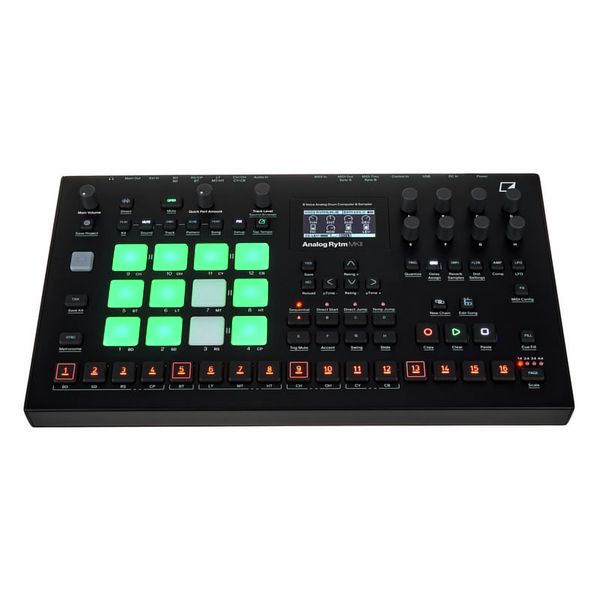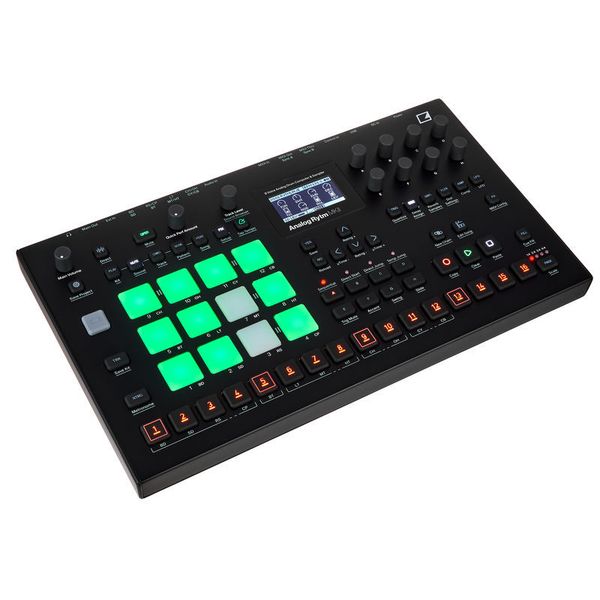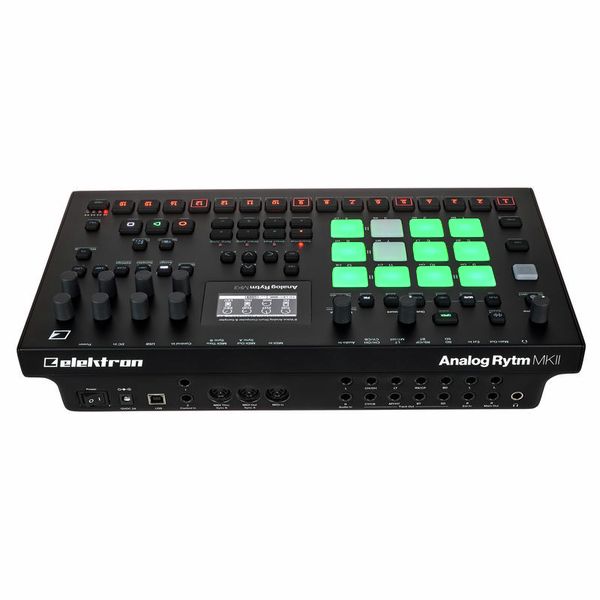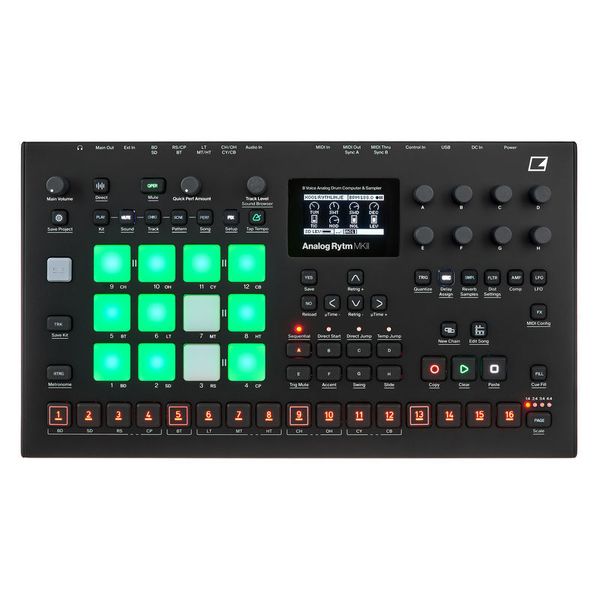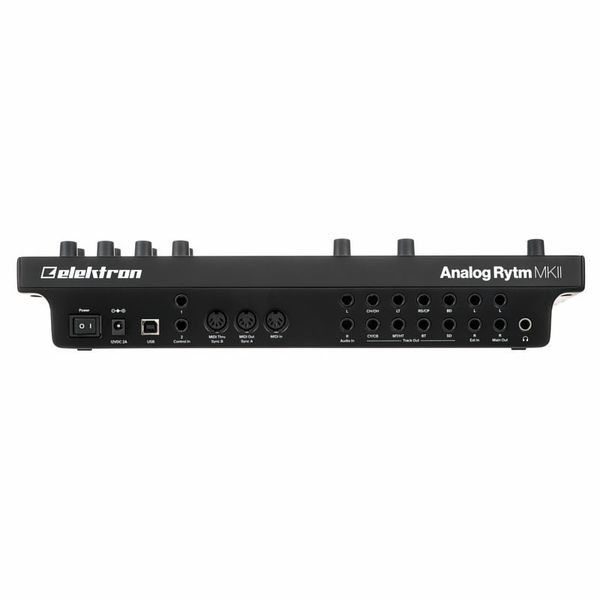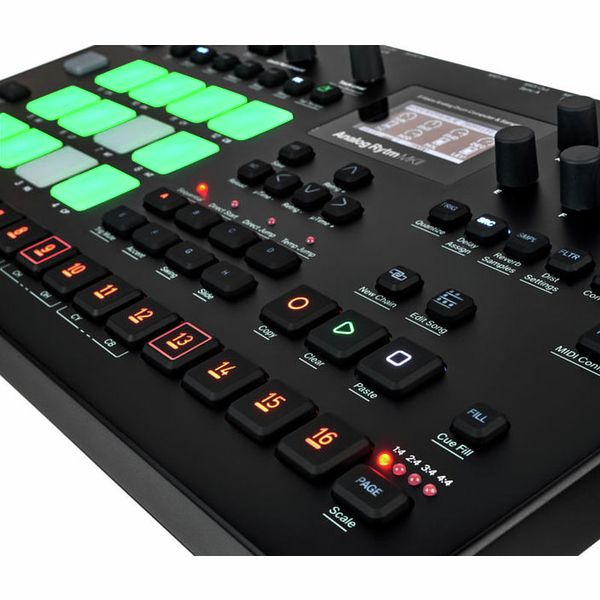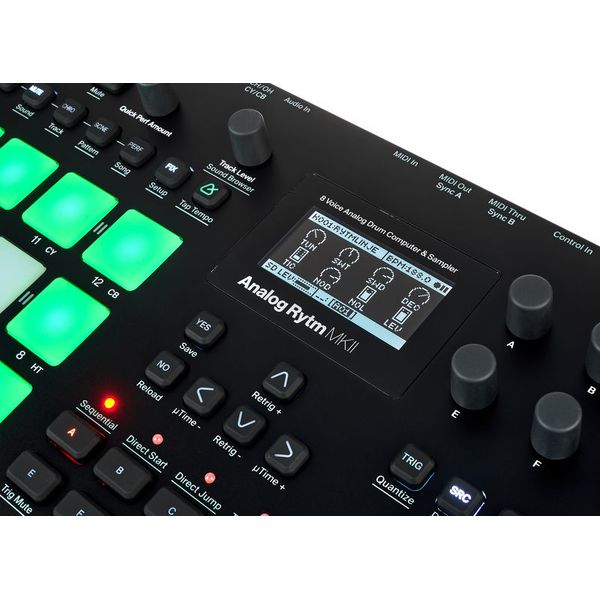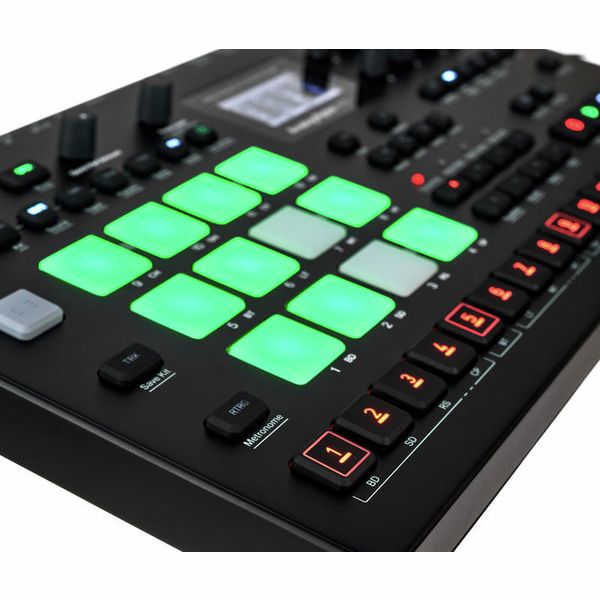Analog Rytm isn't cheap. But the value in the package is incredible! And it's executed really, really well.
This is not a new device, but it's holding up very well. It's still a great buy even in 2025. Let's go through some of the things I like and dislike about it.
HOW IT SOUNDS
To start with, the analog engines sound great. It's not a copy of any particular classic analog drum machine, although every kind of sound has engine variants, so if you're looking for them, you'll find some similar sounds to 808s (toms, cowbell), 606s (kick, snare), and 909s (kick, rimshot, snare). But there's others that are unique. And most importantly, if a given sound simply cannot be achieved through analog circuits, you can use samples.
With samples, Analog Rytm can essentially be any drum machine you want. And a sample will sound great layered on top of an analog engine on the same voice, and then the result goes through the analog filter. This is a powerful combination, through which I basically made Analog Rytm a better TR-707 than a real 707 ever was.
On top of this, Analog Rytm is really a synthesizer in disguise. The three bottom row voices can be used for tuned analog synthesizer sounds. So it's really like an "Analog Three + Percussion and Samples".
MASTER EFFECTS
There is an analog master compressor and analog distortion with a very distinct flavor that can be utilized creatively to spice up the mix and glue it together.
There's also send effects: a reverb and delay, both of which perfectly serviceable, and most importantly nicely integrated with the master compressor and distortion.
There are separate per-voice outputs, but thanks to the tasty master effects, I mostly record the main outs and the kick, so I can sidechain it with the bass tracks in the DAW. Focusing on main outs also allows me to control panning in the device.
HOW IT PERFORMS
In my opinion this is the killer feature of the device. It's not only a drum machine that you program and press "Play". It's a musical instrument that gives you plenty of tools for realtime expression.
The pads are velocity sensitive and pressure sensitive (think: polyphonic aftertouch). I personally really like them and learned to finger drum on them effectively. You can also play on them chromatically, But they're also used for muting tracks and to trigger scenes or gradually (via pressure) introduce configurable performance macros. Those are like "parameter locks", but you can control them gradually. And one of the performance macros can be controlled with the QPER knob, which makes it super convenient to map to some filter cutoff or distortion that you want to dial in and out when playing.
Because that's what this instrument really wants you to do, to play it live. You can connect expression pedals to it for two more ways to control things in realtime. Even the sequencer plays into this.
Look, you've probably heard how the Elektron Sequencer is great. And it's true. Parameter locks are great, both step and live recording works really well. You can make entire songs on the device standalone, and I have done that. With song mode you can reuse the same pattern with different track muting settings, so that there's variety over time. The sequencer allows you to specify how often a given step should play, and relegate some of them as part of a "Fill" that you trigger with a button. Again, a ton of variety and realtime playability.
But there's life beyond the internal sequencer!
There is a very competent MIDI integration that allows you to record your finger-drumming into a DAW, so you can make very complex rhythms. And "parameter locks" are still possible in this world through MIDI CC of machine parameters and performance macros. So in reality most of the time I'm actually recording MIDI into the DAW, so that I can use a full-blown sequencer on the computer.
THINGS I DISLIKE
Clearly, you can tell I really like Analog Rytm. It's not perfect though. Overbridge introduces more latency than I would like, so I record the drum machine via my RME UFX instead. I don't have "Total Recall" in this case, but MIDI support is complete enough.
There's 12 pads, but only 8 voices. Some of the pads are actually sharing a single voice. Those pads choke each other. This makes sense for hi-hats, and also doesn't bother me on the hi-tom/mid-tom pair. But the cymbal/cowbell choke pair in particular is somewhat annoying if you like to introduce a lot of variety in your high register percussion.
The main outs and the dedicated outputs are a bit out of phase: if you want to audibly mix the same sounds from both the mix and the dedicated output, you'll hear they're not in perfect sync. This is rarely an issue, since the delay is minuscule and usually you'll leave some things on the main outs and others on dedicated outputs. But the problem is there.
There's also a pair of audio inputs but those are for sampling only so they sum up to mono. You also have a pair of external inputs, but those are very quiet and aren't routed through any signal processing.
Speaking of volume, gain staging can be complex on Analog Rytm as there's many layers of volume control.
OVERALL
The flaws pale in comparison to the features and look&feel of the instrument. Analog Rytm is a rare product that I would re-buy if I lost it. It is just THAT good.



